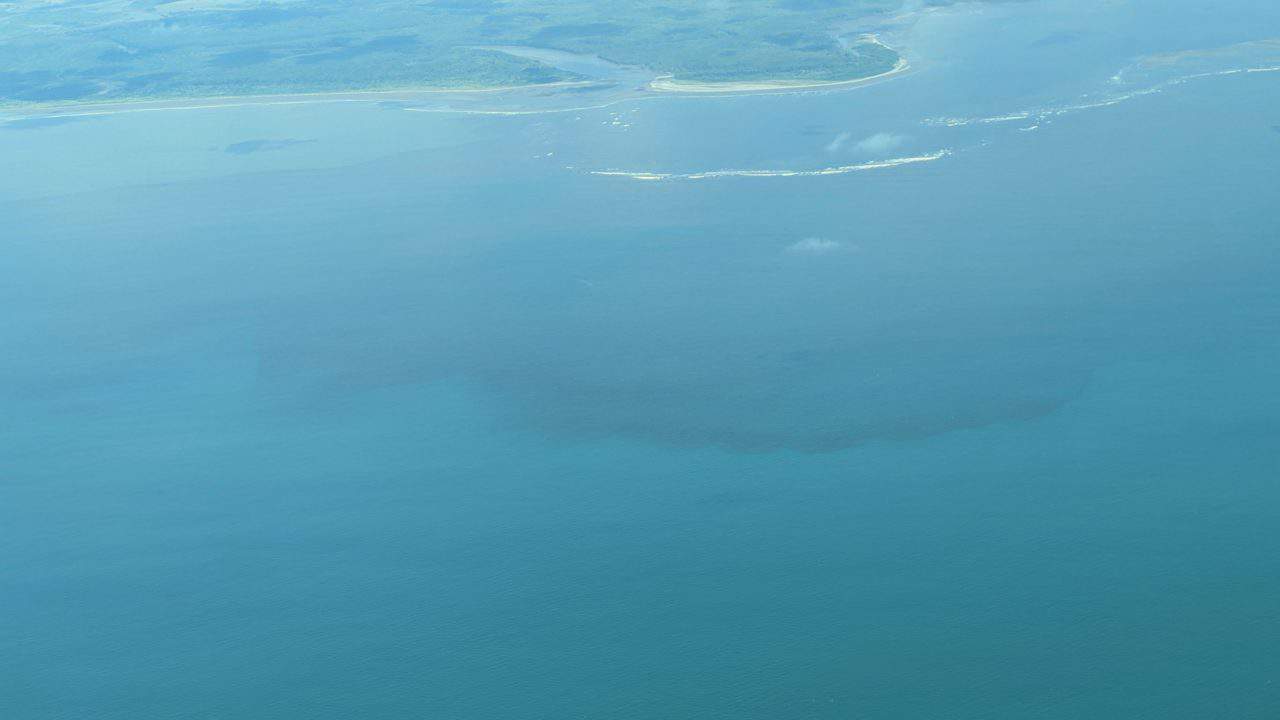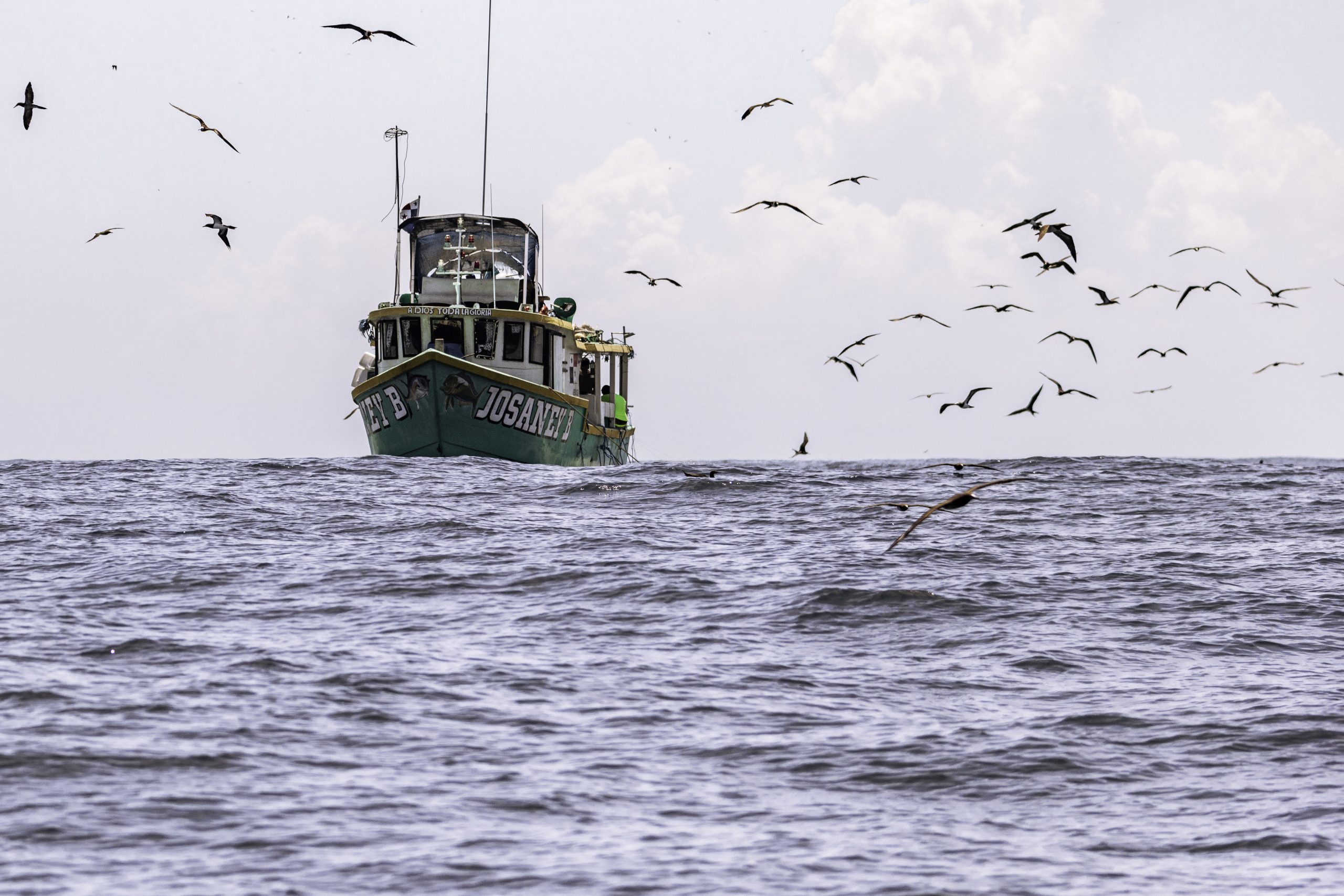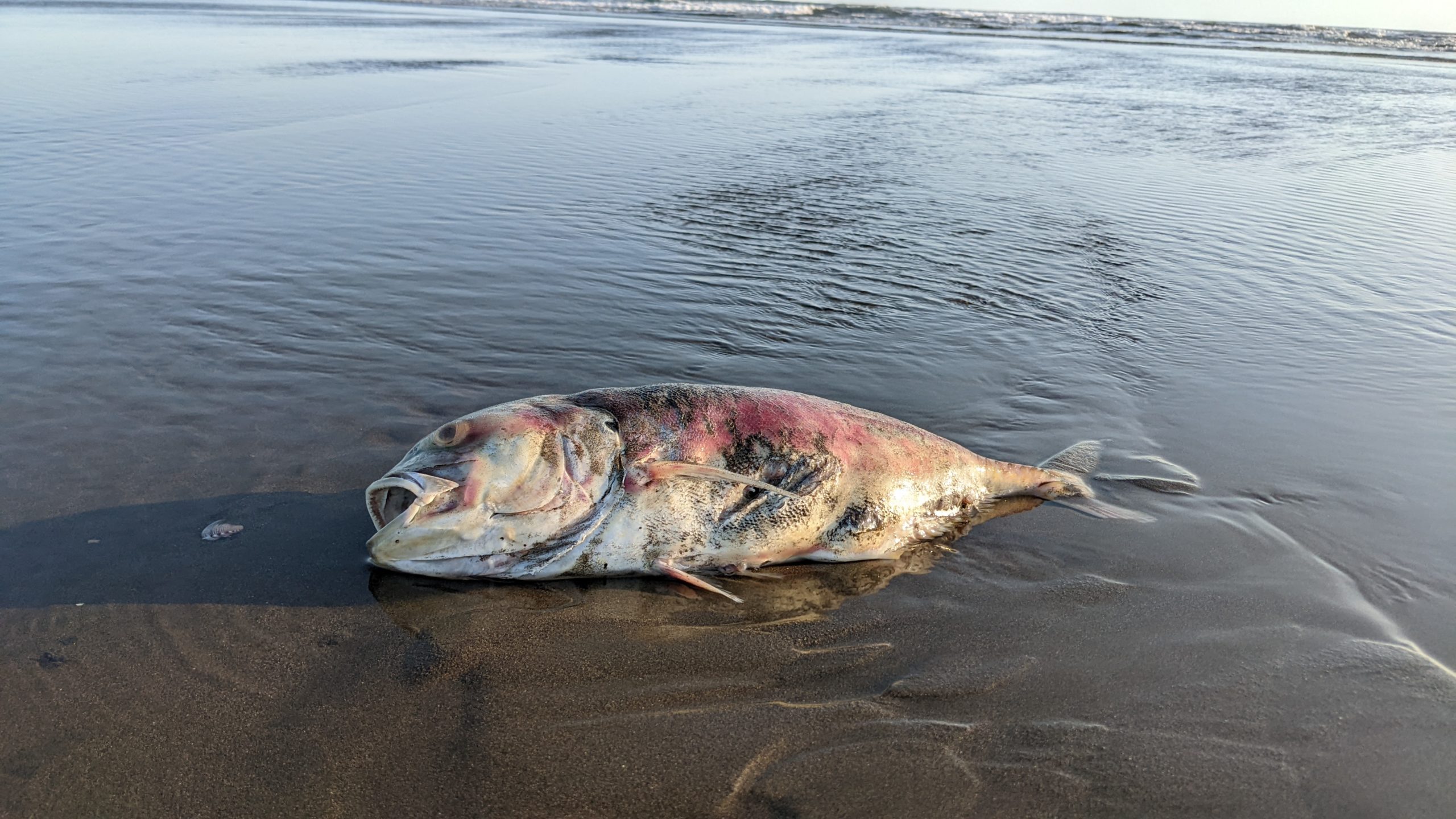In early 2022 Costa Rica was besieged by one of the most unwelcome visitors we get in these parts, the dreaded red tide. Just as fishing was starting to heat up in the middle of our peak fishing season, a red tide sprung up in southern Costa Rica around the areas of Drake Bay and Uvita in early February. It didn’t take long for that to make it’s way up to the main fishing meccas of Quepos and the Los Sueños Resort & Marina, forcing the charter fleet to run out to 40 miles by mid month to find clean water to fish in. Focused on the coastal areas, the red tide completely shut down the inshore fishing as well as some of our favorite offshore high points. It was so widespread it was seen all the way up in the Guanacaste region of Costa Rica down to Coiba Island in Panama where we host a week fishing on our mothership every year.
What is Red Tide?
Red tide is the discoloration of seawater along coastal areas, caused by an increase in harmful algal blooms. A harmful algal bloom (HAB) is a rapid increase in the population of algae in freshwater or marine water systems. It’s caused when microscopic algae multiply exponentially to concentrations far higher than normal, which causes water to discolor. At its worst, red tide causes the water to turn a deep shade of red or brown – hence the name – and it can be extremely harmful to both humans and animals.
It’s important to note that algal blooms vary in color, they are naturally occurring, and they’re not all as harmful as each other. In fact, most algal blooms are actually beneficial because they provide a source of food for fish and other sea creatures at the start of the ocean’s food chain. The harmful algal bloom that causes red tide usually derives from dinoflagellates – a group of algae species, which consists of around 2,000 different species of marine algae. These dinoflagellates can bloom in concentrations of more than a million cells per milliliter, which can produce toxins that are particularly dangerous to fish, and subsequently to humans who may eat the affected fish.
Red tide occurs all over the world in warm seas, and they’ve become far more common and widespread over the past 40 years or so. The majority of red tide occurrences take place in Central America and North America, where every single coastal state as at least one reported incident of the harmful algae bloom. There have also been instances across the globe including Australia, New Zealand, The Philippines, and even countries that tend to have colder climates, such as England, Scotland and Denmark.

A shot of the red tide near Drake Bay, Costa Rica in February 2022.
What Causes Red Tide?
There’s usually a combination of factors which contribute to red tide occurring. Warm ocean surface temperatures, low salinity, high nutrient content, and even algae carried long distances by winds, currents, storms or ships can all be contributing factors. And of course, it is widely believed that human behaviors have played their part too. Climate change has increased the frequency of red tides occurring, and to give a more specific example, more nutrients like those caused by excess fertilizer on farms and lawns have contributed to an increase in harmful algal blooms, as well as toxins that spill into the sea from nearby rivers. Here in Central America we constantly have many of those factors as the water temperatures are usually upper 70s to mid 80s, two of the major ocean currents collide off our Pacific Coast, and sadly farmers here are notorious for overusing both fertilizers and pesticides, which eventually end up in the ocean.
What are the Harmful Effects of a Red Tide?
The biggest and most dangerous effect of red tide is the creation of potent natural toxins, which can be extremely hazardous to marine life and even land mammals, including humans. A bad case of red tide can cause thousands of fish to wash up on shores at the same time, such as what happened along Florida’s Gulf Coast last summer. Even those fish which don’t wash up and die but become sick can then be more vulnerable to predation from other species in the water. There is also a chain effect when the sick fish are eaten by larger predators like sharks, whales and sea turtles because any illness can then be passed on to the apex predators. There have been numerous cases of whales and sea turtles deaths’ being linked to red tides.
It’s not just sea creatures that are affected either, as humans can suffer from the side effects effects too. For example, just entering infected water can be harmful for those with pre-existing medical conditions like respritory issues, but it’s more prominent when humans eat infected seafood, particularly shellfish. The most common issues that are caused for humans are respiratory ones, and these are exacerbated for anyone suffering from asthma, allergies or any other form of respiratory illness. In some extreme cases, paralytic shellfish poisoning (PSP) can occur. This can potentially be fatal, and symptoms will usually be obvious within two hours of eating contaminated seafood. In cases like these, the infected person will suffer from a combination of the following symptoms – tingling, burning, numbness, drowsiness and respiratory paralysis. A more common effect of eating infected food is nausea nd diarrhea. Pets, most commonly dogs, can also be affected by swimming in this water.
How Does a Red Tide Affect Fishing in Central America?
As noted above, at it’s worst a red tide will release toxins in the water which can kill fish. The more severe the HAB, the bigger and more quantity of fish it can kill. When we hosted our friends from Stoked on Fishing on the mothership in Panama in May 2022 we came across a patchy, yet widespread red tide. While we never came across any piles of floating dead fish, one morning while inshore fishing we did notice that our normally hearty live bait – bonito – in the tuna tubes ended up expiring much quicker than normal. It was the first mate who noticed the water all around us was an orangish-brown color, so we quickly deduced that it was the red tide water that killed them. Our center console that day was merely a microcosm of how a HAB would affect the smallest creatures in the food chain first.
As all of us anglers are well aware, fish are simultaneously predators and survivors. Besides harmful toxins, a particularly large HAB will deplete oxygen levels in the water as more of it is consumed the greater the bloom grows. As such, our beloved gamefish aren’t simply going to wait around and accept their fate, rather their survival instinct will kick in and they once they sense they are in low oxygen water that is void of healthy populations of baitfish they will simply move on to better waters. For us anglers, a widespread red tide offers little hope of a productive day on the water because if fish can’t eat and can’t breathe they aren’t going to stick around. Many times when fishing in Costa Rica or Panama it is possible to run around or past the red tide, but when it happens it’s important to be flexible and take what Mother Nature gives you because wherever you see the red tide the fishing is almost guaranteed to be slower if not non-existent.
Red tides can last from anywhere between a few weeks and a few months, so it can potentially cause beach towns and fishing hotspots to lose a large part of their busy season. The red tide in Costa Rica this year started in early February and didn’t really dissipate until late March, so nearly 40% of our five month high season was affected. The best fishing lodges in Panama were able to bounce around the patches of red tide in the Gulf of Chiriqui, but they weren’t immune to it’s affects either. We had a day in late May when we found yellowfin tuna boiling at the surface nearly 60 miles offshore, but incredibly they were around patches of red tide. As soon as the fishing boats spread them out after bombarding them with poppers and stick baits, they started to swim through the affected water and immediately dove deep and the bite shut down. It was the most obvious, visual proof I’ve ever witnessed of how little gamefish will tolerate a red tide.

What can be Done to Prevent HABs?
Satellite imagery is perhaps the biggest advancement in preventing the negative human effects of red tide. Thanks to this technology, scientists are now better able to track and monitor harmful algal blooms before it’s too late, so they’re at least able to forecast if a particular coastal spot is likely to suffer from red tide. This allows them to provide a warning to prevent people from eating infected shellfish or swimming in infected waters. There has also been a lot of research by scientists into a potential antidote for the effects of red tide in humans. While this doesn’t solve the root cause of the problem, it would at least allow medical professionals to treat the symptoms and lessen any long term side effects. Regarding the effects on marine life, there’s not a great deal that can be done to prevent red tide, aside from humans reducing their use of harmful toxins, such as those used in farming and industrial units, plus a slowdown in climate change, which of course forms part of a much wider global issue.


0 Comments